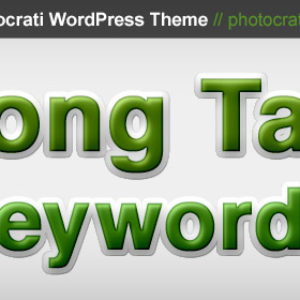Google updates are fortunate as well as unfortunate digital occurrences. They are fortunate for the Internet as a place by making the online content better and unfortunate for the bloggers from around the globe. Graciously penalizing blogs and websites that fail to adhere to their latest directives, Google’s guidelines are fret by many.
This fickle nature of Google Algorithm updates has ruined many blogs and their search engine rankings. Released every now and then, either as minor tweaks to other existing major Algorithm updates or a new update altogether, Google updates have managed to create an upheaval for all online entities. Let’s take a look at the history of the major Google Algorithm updates and what they were meant to serve.
- PANDA, released on February 24, 2011 (Penalized plagiarized web content, user-generated spam)
- PENGUIN, released on April 24, 2012 (Discouraged unnatural and manipulative links)
- HUMMINGBIRD, released on August 22, 2013 (Creating better search queries and results)
- MOBILEGEDDON, released on April 21, 2015 (Helping mobile-friendly pages rank higher)
- RANKBRAIN, released on October 26, 2015 (Penalizing irrelevant pages that turn up for a given query)
- POSSUM, released on September 1, 2016 (Local search result filtered)
- FRED, released on March 8, 2017 (Penalizing websites that prefer excessive Ads over quality content)
- Chrome HTTPS Warnings, released in October 2017 (Boosts a safe browsing environment for visitors)
- Mobile First Index Roll-out, released on March 26, 2018 (Giving way to mobile-friendly websites)
As showcased above, all these Google Algorithm updates are meant to make things right and better for netizens. So, how can a blog owner or a website owner safeguard their blogs from the wrath of them? All they would be required to do is follow some generic instructions to keep their blog running smoothly.
Let’s begin the run-down.

Get rid of excessive Ads
The above-mentioned Algorithm section talks about the Google update Fred which penalizes websites that run excessive Ads over quality content. Also, there’s no denying the fact that excessive advertisements popping up on a website are downright irritating. Affecting the user-experience, they are deemed to draw the fury of search engines in the form of low Google rankings.
To counter the Fred update, you must keep your blog/website free from spammy advertisements and always prefer meaningful content over sponsored content. Capable of causing a huge decline in the pageviews, this update can cause damage to new and experienced bloggers, alike.

Implement HTTPS
Providing a safe avenue to your site/blog visitors while they are submitting their sensitive information or are exchanging information of similar nature through your website is very crucial. To make sure that their online safety and privacy isn’t compromised, the Chrome HTTPS Warnings will tell the visitors that your website is unsafe/hacked if it does not have a security certificate.
This can be a huge setback for your blog’s reputation. To counter this update, you must get a 2048-bit encryption certification for your website which won’t cost you a bomb and stays uniform across all the website building options. If you choose to carry out the upgrade through the ‘Let’s Encrypt’ certificate authority, you might be in for a freebie.
Publish meaningful content that is original
Even if you are not keeping up with all other directives laid by Google updates, you are under the obligation of at least providing original and meaningful content to your audience which is neither thin, spun, nor plagiarized. This applies to all kinds of websites/blog that put up myriad kind of content.
For example, if you are a photographer and run a photography blog, you need to be cautious with the kind of pictures you put up because photographer digital brawls are common over the plagiarism of concept/idea. Choosing the right photography blog template/theme/website builder is also crucial. You can look into Photocrati for 60+ starting designs, built-in galleries, ecommerce, and limitless design possibilities to impart a unique and original feel to your blog.
For others, the similar is true. Creating original content can be overwhelming but it is a must, thanks to the Panda Google Algorithm update. Flagging your content in a bad light, the update can really crash your search engine ranking down the hill.
Keep the bounce rate in check
Higher bounce rates can be fatal for your blog/website. For people newer to the term, Bounce rate is the percentage of people who abandon your website quickly as soon as they land on it, without navigating any further. This can happen due to a lot of reasons; slow website loading time, unpleasant visual aesthetics, etc. You will probably be required to carefully choose your site’s hosting options whether its a Siteground vs. GoDaddy or others. Also, focussing on your site’s UX can solve a larger chunk of these bounce rate issues.
So, if your blog is experiencing a higher percentage of bounce rate, Google will probably pull it down the search engine ranking ladder.
To keep the bounce rate in check, you can do the following:
- Create readable content
- Focus on enhancing the user-experience of your blog/website
- Invite users to interact on your platform through polls, giveaways, quizzes, and opinion posts. This will engage the audience and decrease the rate of site abandonment.
- Popup Ads need to go
- Place a Call-To-Action (CTA) boldly and intelligently on major landing pages so that visitors have a reason to keep navigating through your site and spend more time on it.
Authentic links
A Backlink is a vote of confidence for a blog/website. However, a lot of bloggers get involved in the malpractice of getting unnatural links or sponsored backlinks from other websites/blogs with a not-so-good reputation. This should be avoided at all costs. Also, avoid stuffing your content with a lot of backlinks as tricking the search engines is a thing of the past.
Eliminate SPAM
Regardless of the type, Spam is bad for your site’s ranking. Google heavily penalizes blogs that either voluntarily or involuntarily indulge in spammy actions such as user-generated spam, link trading, guest postings, and mass campaigns. You must make it a point to eliminate this Spam strategically in order to not get penalized by Google.

The Mobile-Responsive design will be a savior
Information is best accessed in the palm of hands i.e. smart devices that are compact yet powerful. Claiming a huge percentage of online traffic, mobile devices deserve all kind of upgrades for a wholesome user-experience, similar to the desktop one. Google’s Mobilegeddon update was rolled out to encourage website and blog owners to optimize their site’s mobile version to the best of their ability. Favoring mobile-friendly blogs and websites, the expert bloggers and website owners experienced a positive spike in their search engine rankings for getting along with the directive.
Google Accelerated Mobile Pages (AMP) is an extension of this directive as it pulls up AMPed pages first when a mobile search is being run for a keyword. Since a report about global mobile data traffic projects a sevenfold increase nearly between 2016 and 2021, it is better to get started with a super-responsive mobile-friendly website version, right now.
In a nutshell
We admit that Google updates and their follow-up can be overwhelming for bloggers and website owners, alike. However, we should not overlook the undertone to these updates which are all about making our blogs and websites more robust, competent, aesthetically pleasing, and relevant as per the fast-moving changes in the digital world.
—
Catherrine Garcia is a passionate blogger and a freelance Web Developer currently working for WPCodingDev. She along with her group of freelance developers are experts of creating Websites on WordPress.



Brett
26 Sep 2018I think these are all good points. But I haven’t figured out a way to make Photocrati/NextGen play nice with AMP yet. I believe that the NextGen galleries use prohibited JavaScript, so there is no way to display photo galleries using the simplified AMP views. Am I missing something?
Scott
26 Sep 2018We have AMP gallery conversion on the roadmap, but until all browsers support AMP there is still no guarantee it will stick around. Which is why it hasn’t been high on the priority list.